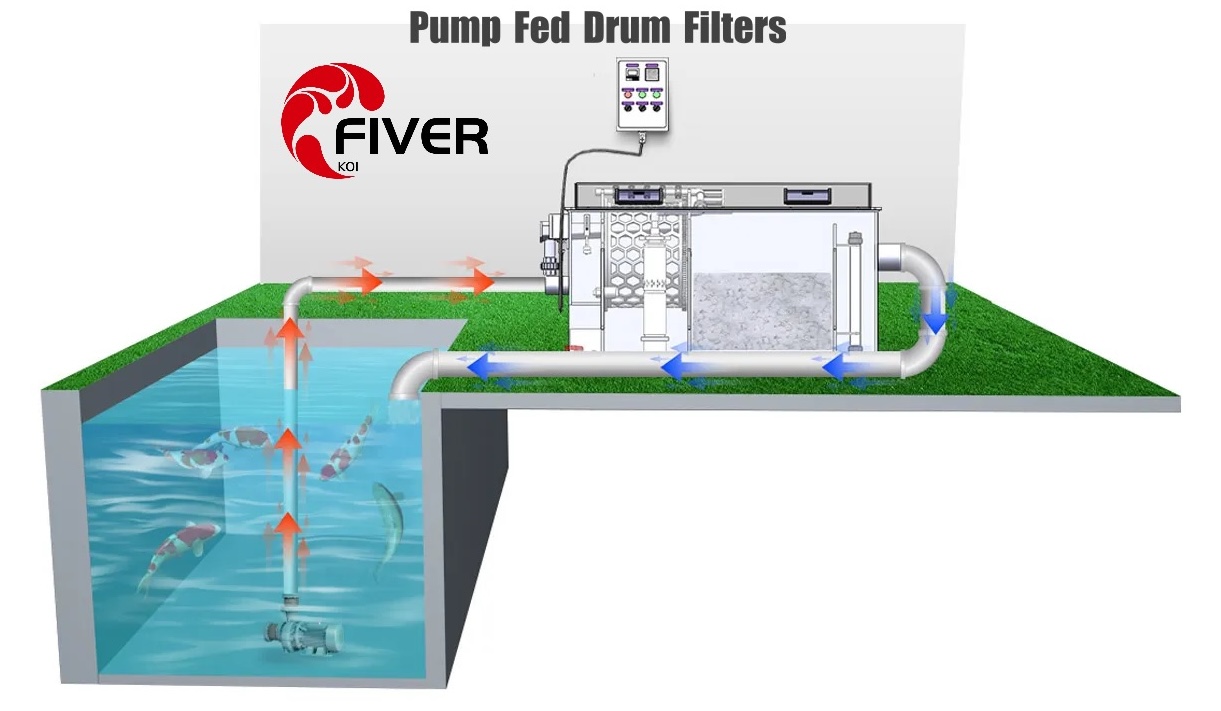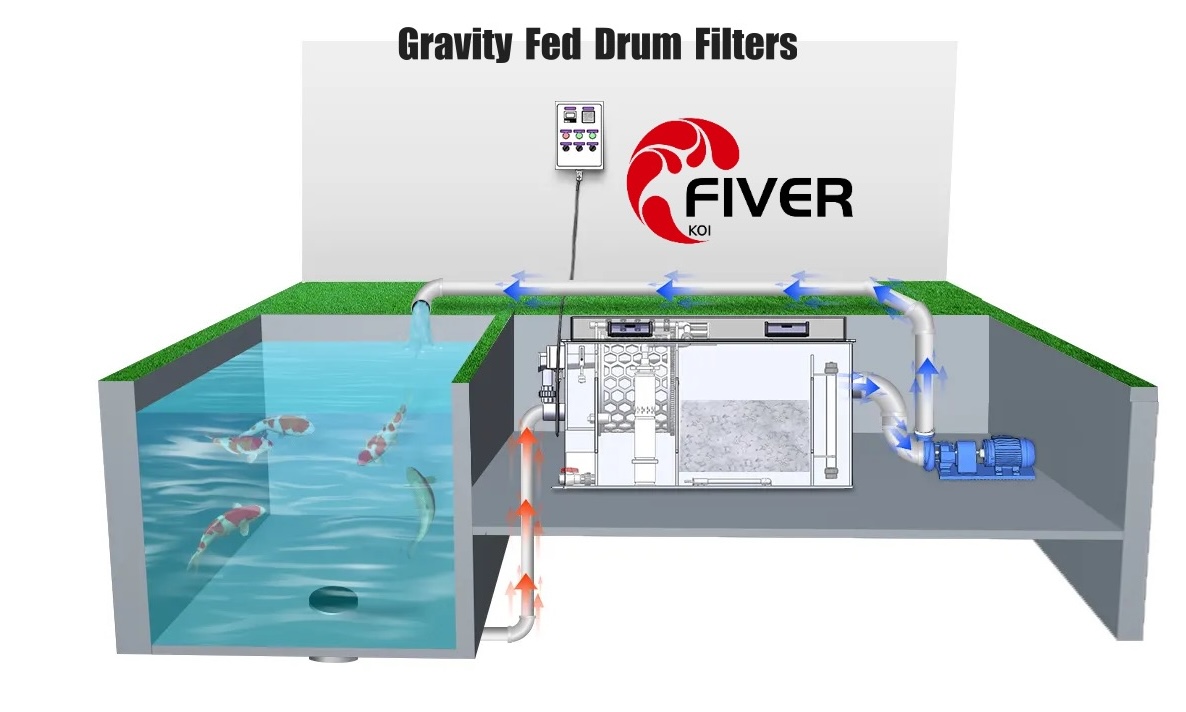In order to answer this question, firtly let's explain what is a pump-fed rotary Drum Filter and what is a gravity-fed rotary drum filter, and how they work.
Pump-Fed Rotary Drum Filter

A pump-fed rotary drum filter is a type of pond filtration system that utilizes a dedicated pump to actively push water through a rotating drum screen. This creates a highly effective and automated method for maintaining pristine water quality in your koi pond.
Here's a breakdown of how it works:
Pump Power: A separate pump is the driving force behind this system. It actively pulls water from your koi pond.
Filtration Process: The water pumped from the pond is then directed through the rotary drum filter. This drum filter has a cylindrical mesh screen that rotates continuously.
Straining Debris: As the water flows through the rotating drum, the mesh screen efficiently strains out debris, waste particles, and suspended solids from the water column.
Clean Water Returns: The filtered water, free of debris, is then returned back to your koi pond, completing the filtration cycle.
Gravity-Fed Rotary Drum Filter
 Gravity-fed drum filter systems are limited by the natural flow of the pond water. While they can be effective for smaller ponds, they might not be suitable for very large ponds requiring high flow rates.
Gravity-fed drum filter systems are limited by the natural flow of the pond water. While they can be effective for smaller ponds, they might not be suitable for very large ponds requiring high flow rates.
Relying on Gravity:
Placement: The key to a gravity-fed system is positioning the drum filter unit below the water level of the koi pond. This creates a natural downward flow due to gravity.
Water Flow Path:
Pond Inlet: Water enters the filter through a pipe connected to a drain point situated below the pond's water level. A valve on this line allows for flow rate control.
Filter Drum: The incoming water enters the inner chamber of the drum filter unit. Here, it flows through a rotating, cylindrical mesh screen.
Filtration: The fine mesh screen captures solid waste like fish waste, leaves, and algae, while allowing clean water to pass through.
Clean Water Exit: The filtered water exits the drum and flows out of the filter unit through a separate pipe.
Waste Discharge: The captured waste accumulates on the drum's surface. Most drum filters have a spray bar or nozzle that periodically sprays the mesh clean. This flushes the collected waste out of the filter unit to a drain or designated waste disposal area.
Difference Between Pump-fed and Gravity-fed Drum Filters:
Efficiency:
Pump-fed: Generally, pump-fed systems can achieve higher flow rates due to the dedicated pump pushing the water. This can be beneficial for larger ponds with a higher volume of water to be filtered.
Gravity-fed: Gravity-fed systems are limited by the natural flow of the pond water. While they can be effective for smaller ponds, they might not be suitable for very large ponds requiring high flow rates.
Maintenance:
Pump-fed: Since the pump is actively pulling water through the filter, it might sometimes pull in larger debris that could clog the drum filter mesh. This might necessitate more frequent cleaning of the pre-filter or mesh screen on the pump itself.
Gravity-fed: Gravity-fed systems rely on the water level to push debris through the filter. Larger debris might settle before reaching the filter, potentially requiring cleaning in the pond itself. However, the lack of a pump can mean less wear and tear on moving parts.
The Considerations When Choosing a Pump-fed or Gravity-Fed Rotary Drum Filters:
Pump-fed: Requires an additional pump and the associated electricity consumption.
Gravity-fed: Limits filter placement options and might not be suitable for all pond layouts due to needing a lower positioning.
Choosing the Right System:
The best choice between pump-fed and gravity-fed depends on your specific pond setup. Here's a quick guide:
For larger ponds with high water flow needs: Pump-fed might be a better option due to its higher potential flow rate.
For smaller ponds with limited space for a pump: Gravity-fed could be a good choice if the water flow is sufficient.
For simpler setups with minimal maintenance needs: Gravity-fed might be preferable due to the absence of a pump requiring maintenance.
Ultimately, it's important to consider your pond size, water flow, desired filtration level, and budget when making a decision.
Post time:2024-07-09
